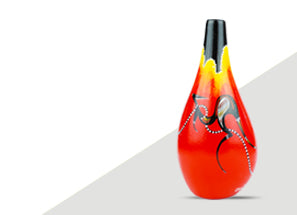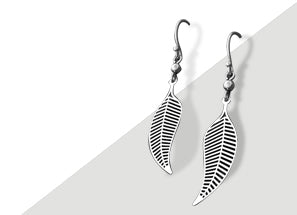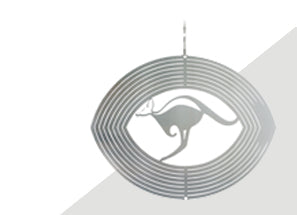-
Aboriginal
- Artwork
- Bags
- Bath and Body
- Boomerangs
- Coasters & Placemats
- Cufflinks
- Cushions
- Jewellery
- Scarves
- Socks
- Souvenirs
- Stationery
- Tablecloths & Runners
- Teatowels
- Ties
- Wrapping Paper

-
Artists

-
Bath and Body

-
Clothing
- Adult Tshirts
- Adult Ladies Tshirts
- Bibs
- Childrens Tshirts
- Gloves
- Hats
- Leather Wallets
- Scarves
- Socks/Footwear
- Ties
- Winter Scarves

-
Homewares
- Aboriginal
- Aprons
- Bags
- Ceramics
- Christmas Decorations
- Clocks
- Coasters
- Cushions
- Foods
- Glass
- Picture Frames
- Placemats
- Tablecloths & Runners
- Teatowels
- Timber Trivets
- Window Decals
- Wine Charms

-
Jewellery

-
Souvenirs
- Books
- Can Coolers
- Childrens
- Chocolates
- Gold Pins
- Jerky
- Keyrings
- Leather
- Magnets
- Mouse Pads
- Pewter
- Skins
- Soft Toys
- Two Up
- Wind Spinner

-
Stationery

-
Timber
- Banksia
- Bookmarks
- Christmas Decorations
- Clocks
- Coasters
- Frames
- Pens & Accessories
- Puzzles & Toys
- Trivets

Learn To Throw A Boomerang
How to throw a Boomerang
-
SAFETY TIPS
Boomerangs do come back and it is important that you take some precautions to protect yourself, others and your boomerang from unfortunate mishaps upon its return.
Remember that ideally you are the target!
- Don't attempt to throw a boomerang in gusty or breezy conditions.
- Don't throw them if there are uncontrolled children present.
- Spectators should stand at least 10 metres behind the thrower preferably on their right.
- If it looks as if a boomerang may hit someone they should turn their back to it and cover their face with their hands.
- Do not run away from the boomerang as its curved flight path is difficult to judge and you may actually run into it.
- Do not throw too hard, especially when learning.
- Do not throw over obstacles or hard uneven surfaces.
- Do not use too much layover (lean).
- Take you time throwing it. Remember once it has left your hand you have no control over it.
In spite of these warnings, boomerang throwing is a relatively safe sport.
-
BOOMERANG CONSTRUCTION
The special aerodynamic design of the boomerang is the key to its ability to return. You will notice different planes on the wing tips which each contribute to its flight and returning ability. One side is flat, except for one predominant bevel which has been cut into it. The other side of the boomerang is curved, forming airfoils. The arm of the boomerang with the bevel on it is the lifting arm, whilst the other end which is flat is called the dingle arm.
The boomerang is of strong construction, however it is not unbreakable. Risk of breakage will be almost nil if you follow the safety above. Too much layover is the single most common cause of breakage. If it gets chipped or broken we recommend that you repair it immediately with epoxy resin glue and clamp it so that it lies flat. To keep it in good order and water resistant it is a good idea to polish it with clear shoe polish regularly.
-
HOW TO THROW IT
Select a large open field or beach where there is little or no wind. The boomerang flies in a circle approximately 30 metres in diameter, but allow more space than that. Make sure there are no rocks or hard obstacles around which could damage your boomerang.
Warn any spectators about the safety points mentioned above.
If there is a breeze, determine where it is coming from and aim 45 degrees to the right of it. Grasp the dingle arm in your hand and hold the flat side of the boomerang against the palm of your right hand. You should hold a comfortable two fingers depth of boomerang. To gain spin it is important to hold no more than 4cm in your hand. You should hold the boomerang at eye level and lean it over 30 degrees. (If it were the hand on a clock it would be pointing at one o'clock ). This is called layover. To obtain different effects the layover or lean may be varied from 0 degrees to 30 degrees ( 12 o'clock to 1 o'clock ). A near vertical or zero layover is used to compensate for a breeze and will make the boomerang fly low and tend to land in front of you.
The most important part of boomerang throwing is to spin the boomerang really fast. Bring the boomerang over the shoulder and sharply draw your arm forward to full extension like a whip cracker. The boomerang should spin out of your hand with its own inertia pivoting over the index finger, which is kept bent around the tip. Throw it straight outward, neither up nor down. If you are strong do not throw it too hard.
When thrown correctly the boomerang should circle around to the left and climb steadily, finally slowing to a hover in the vicinity of the thrower. With practice, experience and courage the boomerang can be caught at this stage of its flight. It is best to wear a glove on the left hand when learning. Catching is best achieved by clapping both hands together over the boomerang as one does a frisbee.
-
LEFT HAND THROWERS
A boomerang can be readily thrown with the left hand - here is what you do. Hold 4 cm of the bevelled end in the left hand with the flat side toward your face.
- The boomerang is then brought over the left shoulder and thrown in an arc over the head, like a tennis serve, so that it leaves the hand inclined at an angle of 30 degrees (the one o'clock position) with the flat side leaning to the right. As in the case of a right handed thrower it should be thrown straight outward and be spinning fast.
-
COMMON DIFFICULTIES AND THEIR REMEDIES
- The boomerang lands to your left....aim more to your right.
- The boomerang lands on your right....aim more to your left.
- The boomerang crashes without gaining height, or skips along the ground....give it more layover.
- The boomerang lands in front of you....give it more layover.
- The boomerang lands behind you after flying high....give it less layover.
- The boomerang swoops up high after throwing....
- Be sure you are not throwing it up. Throw straight out at eye level.
or - Be sure that your layover isn't too great.
or - Be sure the wind is not too strong.
- Be sure you are not throwing it up. Throw straight out at eye level.
- It spins slowly....
- Do not hold too much of the tip of the boomerang (2 fingers depth)
- Try holding the lifting arm being sure that the flat side is to the palm. Although less accurate, this method will help you gain more spin as the weight of the boomerang is now in front of your hand.
- It flies straight out and does not curve....hold the boomerang with the flat face out.










